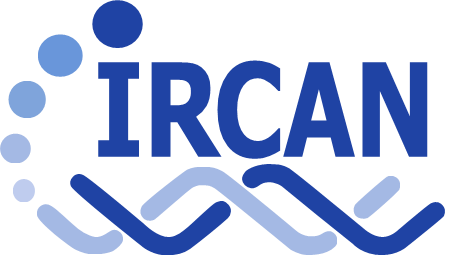
Current lab members:
- Eirini TROMPOUKI, DR2 Inserm
- Veronica Bergo (PhD student based in Freiburg)
- Giang To Vu (PhD student)
- Ahmed Mady (PhD student)
- Nghia Tran Trung (PhD student)
- Laurelly Caliari (Master 1 student)
- Aikaterini Polyzou (bioinformatician)
Lab Alumni:
We investigate the mechanisms that govern hematopoietic stem cell formation during development, adult hematopoietic regeneration and blood diseases. We are mainly focused on the mechanistic intersection of these processes.
In particular, we are currently interested in the interplay between repetitive/transposable elements and innate immune signaling mediated through RNA sensors and how these signals integrate into regulating hematopoiesis. We think that repetitive elements play fundamental roles in developmental and adult hematopoiesis both by signaling through their RNA transcripts and functioning as cis-regulatory elements.
Mission & Goals
Hematopoietic stem cells are formed during development where they actively proliferate to create the adult hematopoietic stem cell pool. We are focusing on signals that regulate this process and we recently identified that repetitive elements expressed during development signal through RIG-I-like receptors to induce inflammatory signals that enhance hematopoietic stem cell formation. Repetitive elements are also induced in adult hematopoiesis, especially during stress situations like chemotherapy. Our goal is to further delineate the role of repetitive elements and inflammation in physiological and pathological hematopoiesis.
Approach
We use zebrafish, mouse and primary human cells to investigate all aspects of hematopoiesis. We are harnessing the power of different models to fully address the functionality and signals that shape hematopoietic stem cell decisions. We are heavily relying on genome-wide methods like expression, chromatin accessibility, chromatin immunoprecipitation and other assays to deepen our knowledge in the molecular mechanisms that govern hematopoiesis.
Current Projects
Publications
- par Donia HidaouiChronic myelomonocytic leukemia (CMML) is a severe myeloid malignancy affecting the elderly, for which therapeutic options are limited. DNA hypomethylating agents (HMAs) provide transient responses, failing to eradicate the malignant clone. Hematopoietic stem cell (HSC) aging involves heterochromatin reorganization, evidenced by alterations in histone marks H3K9me2 and H3K9me3. These repressive marks together with DNA methylation are essential for suppressing transposable elements (TEs). In…
- par Athina BoumpasINTRODUCTION: Immune checkpoint blockade (ICB) immunotherapy has revolutionized cancer treatment, demonstrating exceptional clinical responses in a wide range of cancers. Despite the success, a significant proportion of patients still fail to respond, highlighting the existence of unappreciated mechanisms of immunotherapy resistance. Delineating such mechanisms is paramount to minimize immunotherapy failures and optimize the clinical benefit.
- par Ole Kristian Greiner-TollersrudAlthough adenosine deaminase 2 (ADA2) is considered an extracellular ADA, evidence questions the physiological relevance of this activity. Our study reveals that ADA2 localizes within the lysosomes, where it is targeted through modifications of its glycan structures. We show that ADA2 interacts with DNA molecules, altering their sequences by converting deoxyadenosine (dA) to deoxyinosine (dI). We characterize its DNA substrate preferences and provide data suggesting that DNA, rather than free…
- par Francisco Triana-MartinezThe ability of an organism to overcome infectious diseases has traditionally been linked to killing invading pathogens. Accumulating evidence, however, indicates that, apart from restricting pathogen loads, organismal survival is coupled to an additional yet poorly understood mechanism called disease tolerance. Here we report that p16^(High) immune cells play a key role in establishing disease tolerance. We found that the FDA-approved BNT162b2 mRNA COVID-19 vaccine is a potent and rapid inducer…
- par Giang To VuHematopoiesis, the process of generating blood cells, starts during development with the primitive, pro-definitive, and definitive hematopoietic waves. The first two waves will generate erythrocytes and myeloid cells, although the definitive wave will give rise to hematopoietic stem cells (HSCs) that are multipotent and can produce most of the blood cells in an adult. Although HSCs are highly proliferative during development, during adulthood they remain quiescent in the bone marrow….
- par Eline LemerleTransposable elements (TEs) are dispersed repetitive DNA sequences that can move within a genome. Even though hundreds of years of evolution have led to the accumulation of mutations that render most TEs unable to transpose, they still exert multiple important functions. They play a role in hematopoiesis, especially during periods of high cellular plasticity, such as development, regeneration and aging. This is because TEs can populate functional elements, such as enhancers. Furthermore, TE RNA…
- par Eline LemerleNo abstract
- par Effie ApostolouNo abstract
- par Ev-Marie SchusterSuccessful elimination of bacteria in phagocytes occurs in the phago-lysosomal system, but also depends on mitochondrial pathways. Yet, how these two organelle systems communicate is largely unknown. Here we identify the lysosomal biogenesis factor transcription factor EB (TFEB) as regulator for phago-lysosome-mitochondria crosstalk in macrophages. By combining cellular imaging and metabolic profiling, we find that TFEB activation, in response to bacterial stimuli, promotes the transcription of…
Lab News
-
New Website!
Please enjoy our new website! We want to create a imersive hub for all news and events in the fields of cancer and ageing. if you see an error, please […]
Find out what projects IRCAN researchers are working on at the moment!
Find out about our platforms and services that drive our research.
IRCAN has a diverse research teams, tackling a wide range and resolution of topics in ageing and cancer.




